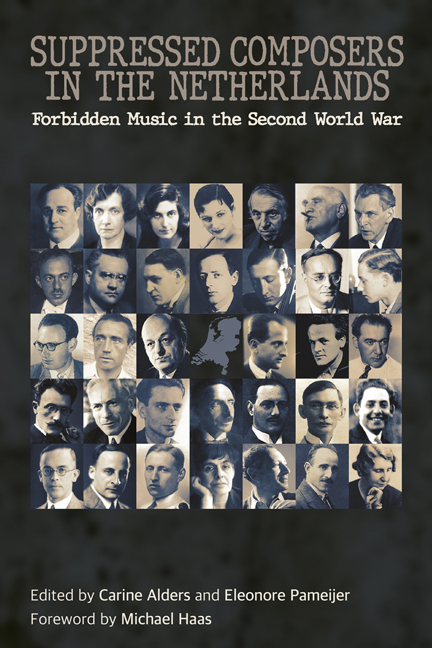31 - Marjo Tal
Published online by Cambridge University Press: 09 May 2024
Summary
Marjo Tal shunned publicity and rarely gave interviews. As a composer and pianist, she was solely concerned with creating and re-creating music, and was subservient to these concerns her entire life. The few magazine articles about her reveal her passionate and self-conscious artistry. Sparse photographic material shows a beautiful woman, with sensual and melancholic features. Tal survived the war by going ‘underground’. Her career as a pianist peaked in the mid-1960s, after which she focused more on composing. Towards the end of her life she emigrated to Israel.
Marjo Tal was born in The Hague on 15 January 1915, the eldest of three daughters in a liberal Jewish family of orthodox origin. Very early on, she showed musical talent and received violin and piano lessons. The loss of her father, who died from diabetes on Marjo's twelfth birthday, meant that she came to regard Sem Dresden, at that time her teacher in solfège, music theory and composition, as a substitute father-figure. On his advice she went, at the age of thirteen, into the care of the concert pianist and pedagogue Nelly Wagenaar (1898–1985).
After high school she continued studying with Dresden and Wagenaar at the Amsterdam Conservatoire. In 1936, at the age of 21, she passed her final piano exam and received a recommendation for the Prix d’Excellence. However, over the years a somewhat stiff relationship had developed between Wagenaar and her pupil, perhaps because of rivalry. Tal withdrew from the contest for the Prix, but participated in another competition and won a scholarship to study abroad. One of the jurors commented after her performance: ‘We have heard a Vesuvius today’.
For three years she lived in London, where she studied with the Jewish pianist Franz Osborn, who had fled Berlin and became a British citizen. She accompanied Carl Flesch's violin students, gave private concerts for high society and auditioned for Myra Hess, who, however, told her: ‘You do not need me’. Back in the Netherlands Tal made her official debut on 7 March 1940 in a recital at the Diligentia Theatre in The Hague. She played, among other works, Beethoven's Piano Sonata No. 28 in A major, Op. 101.
- Type
- Chapter
- Information
- Suppressed Composers in the NetherlandsForbidden Music in the Second World War, pp. 285 - 292Publisher: Boydell & BrewerPrint publication year: 2024

